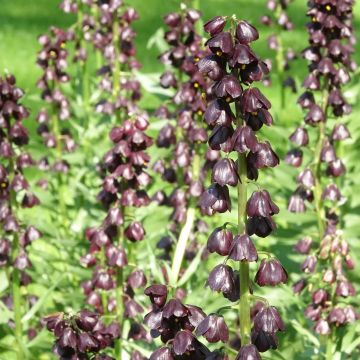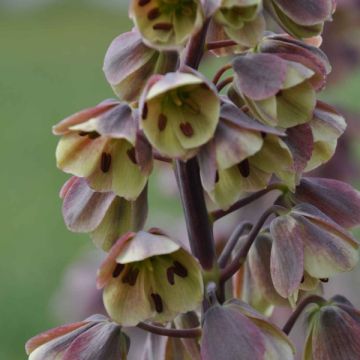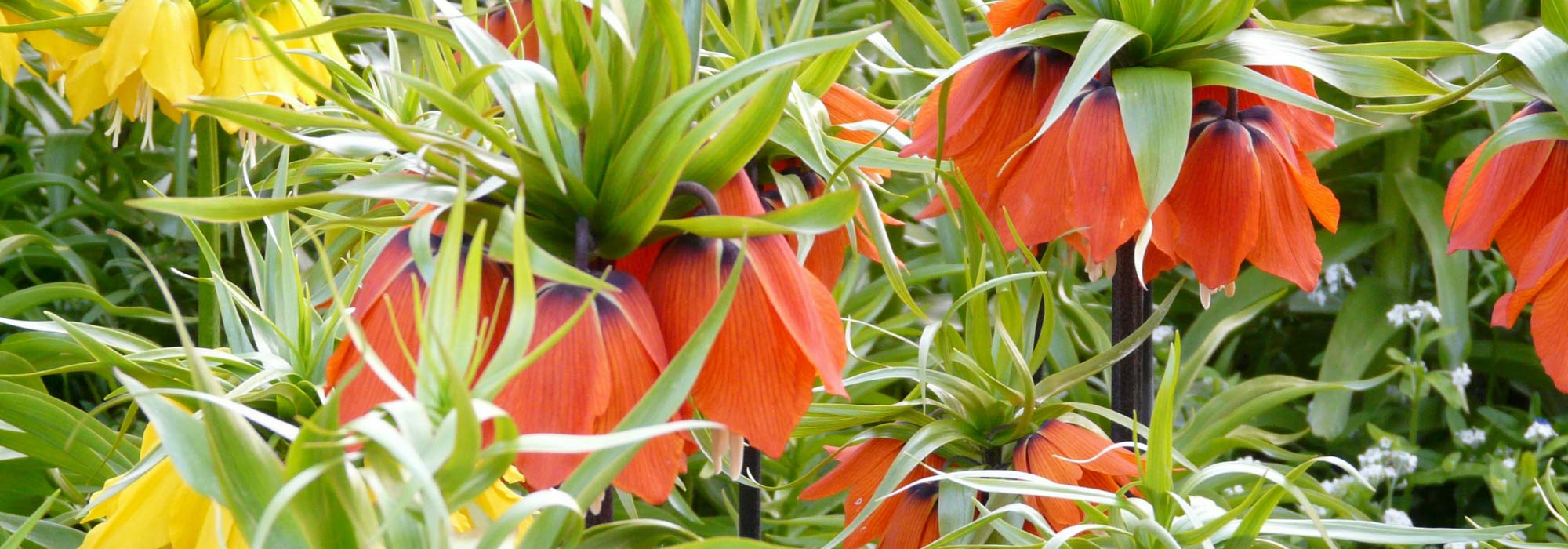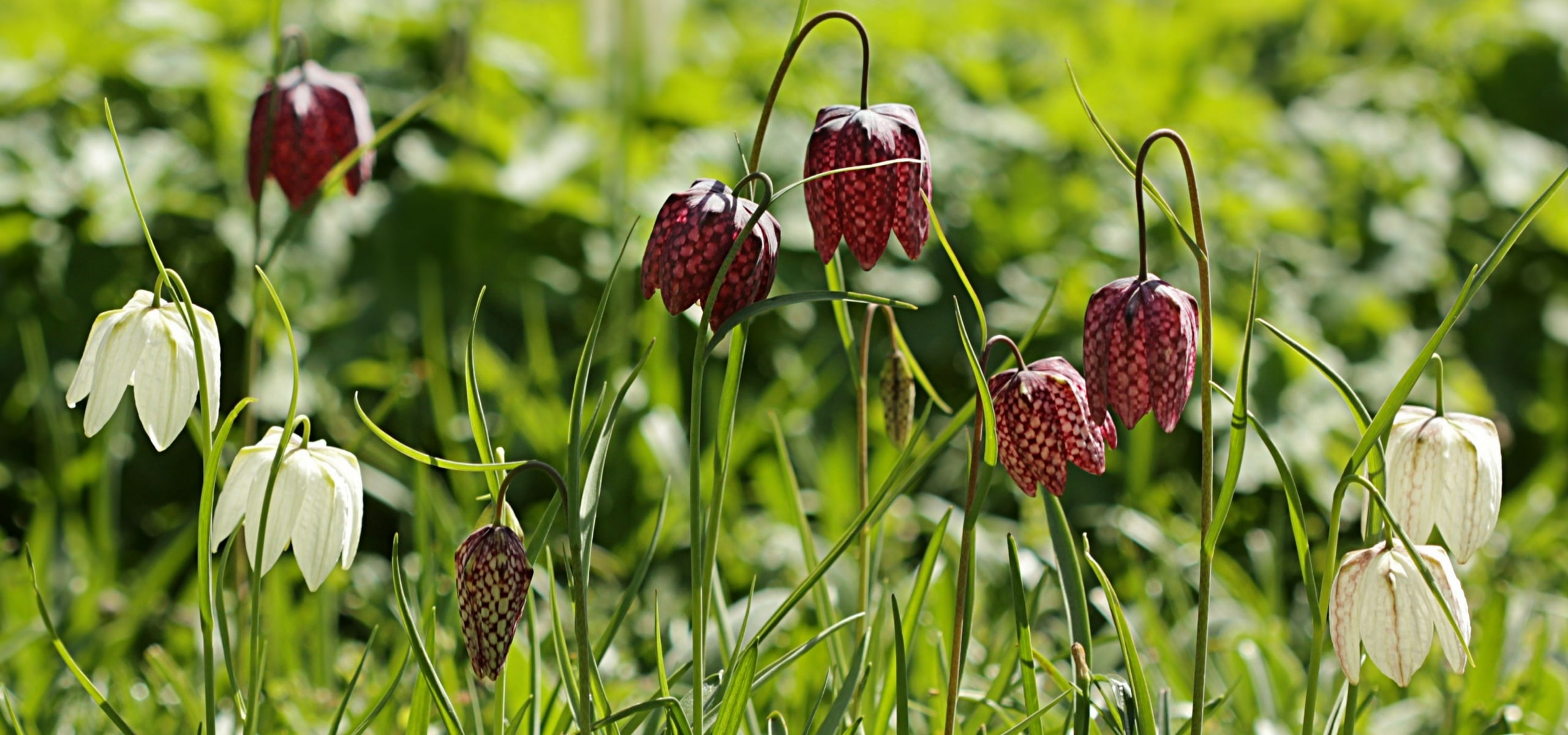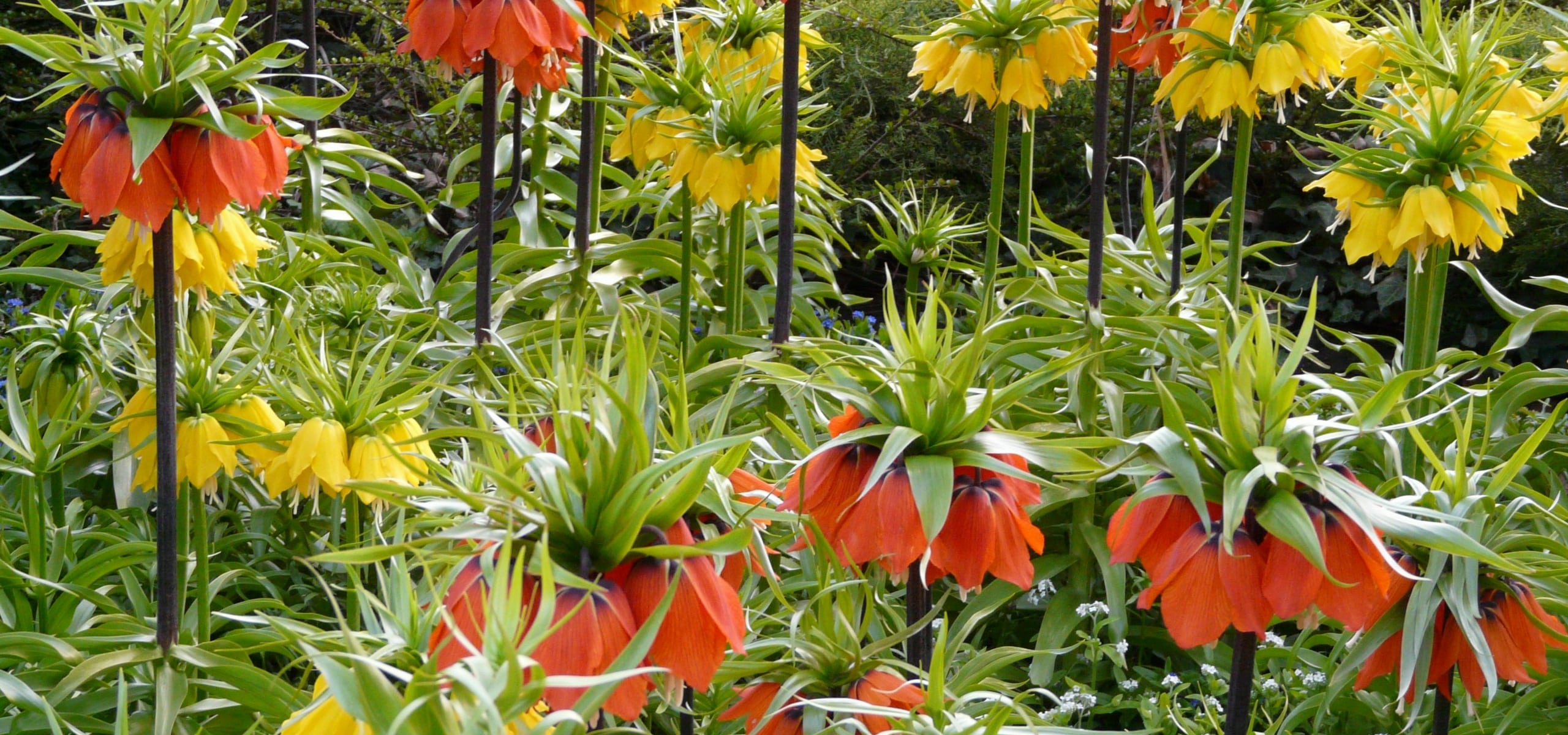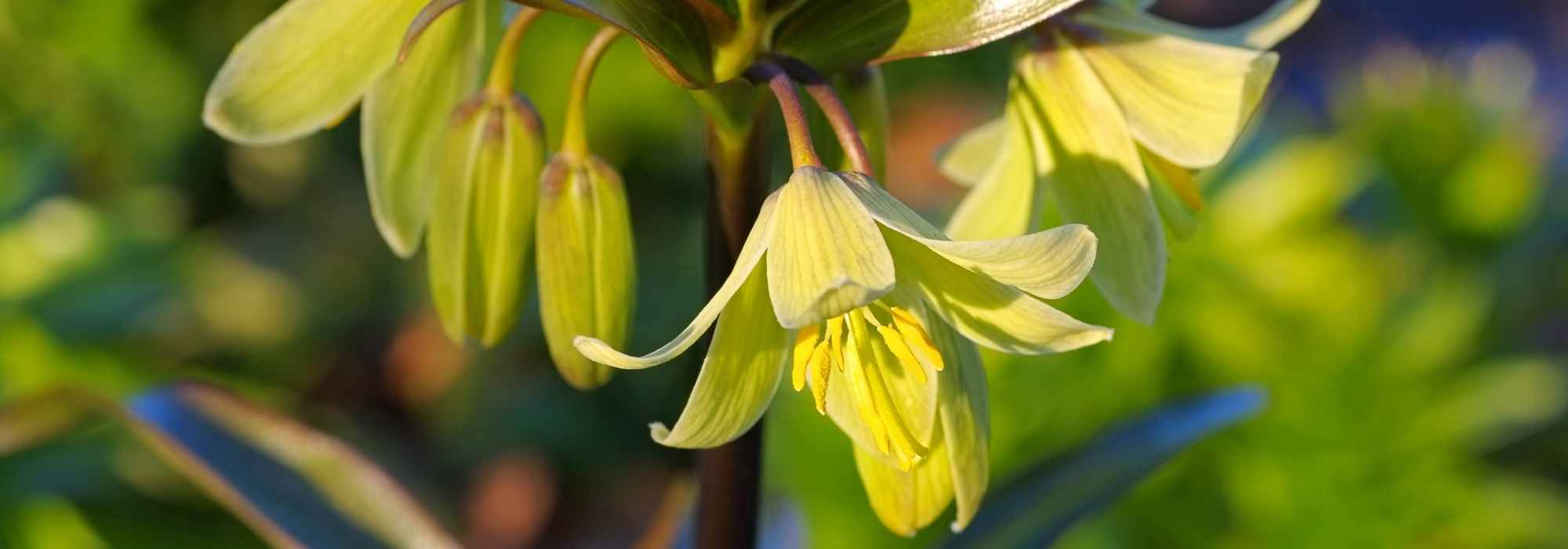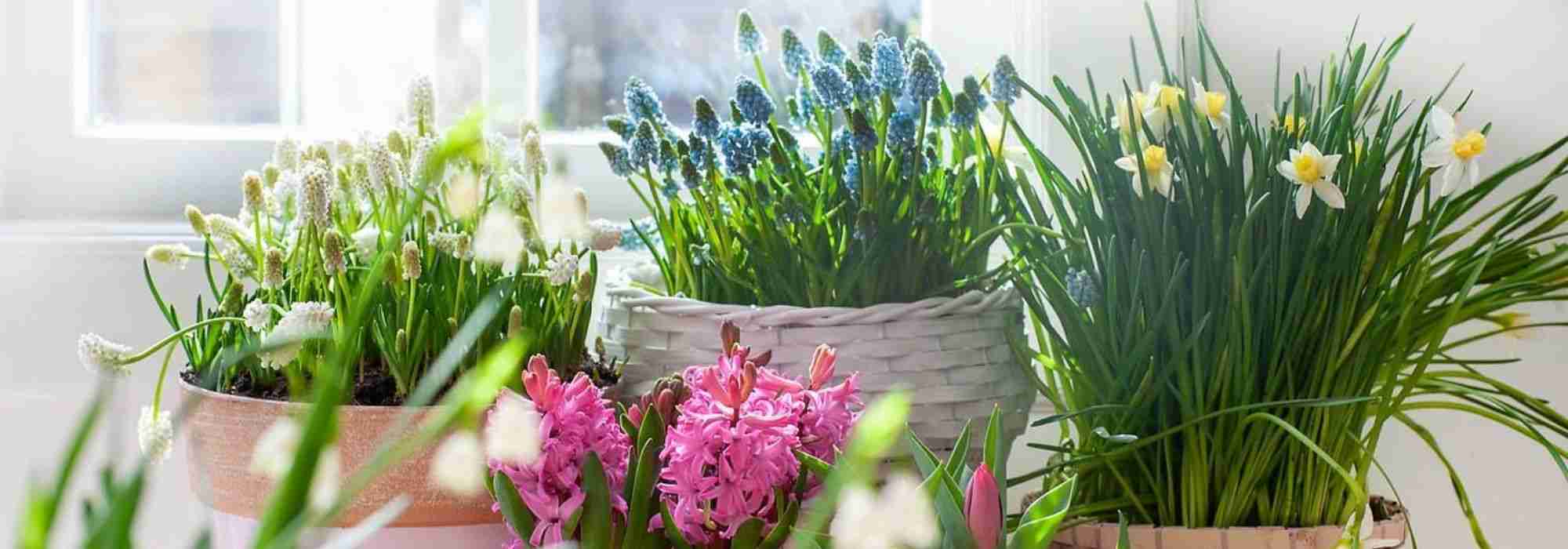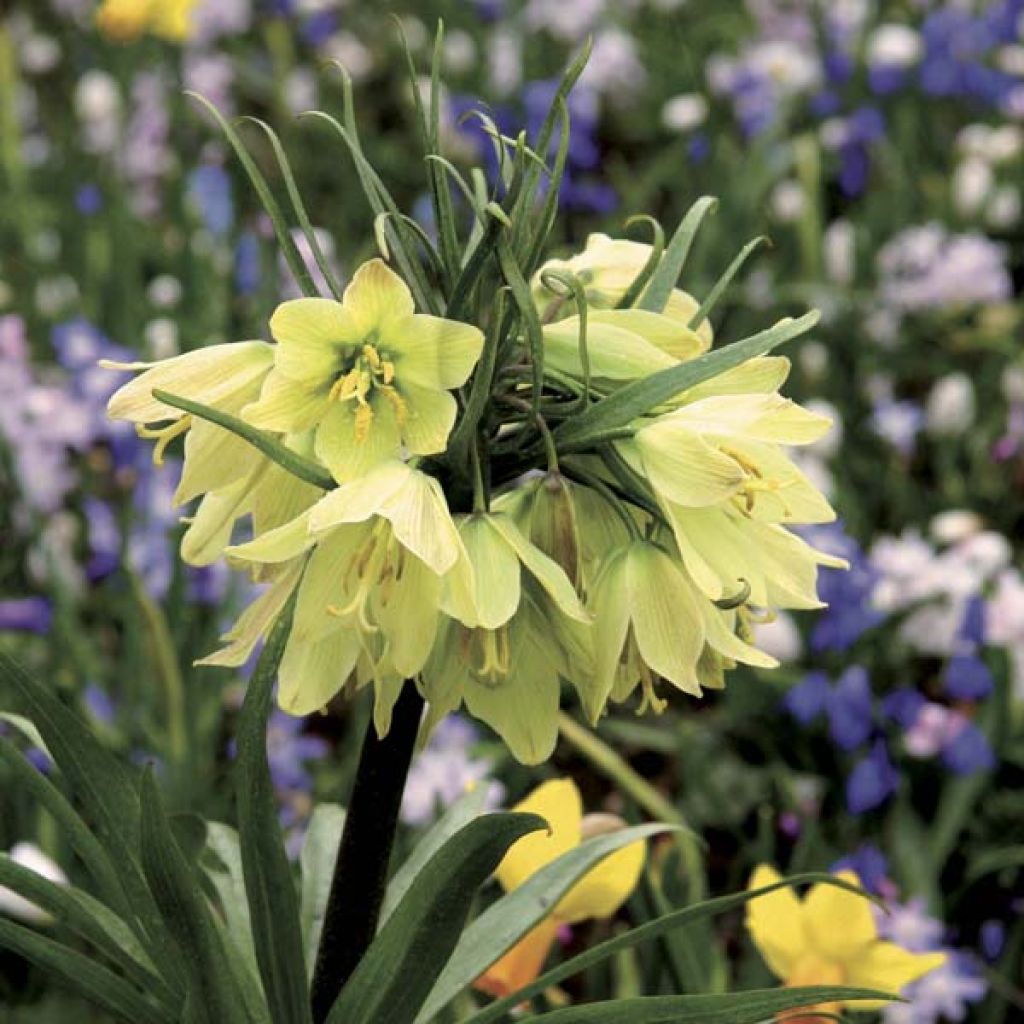

Fritillaire imperialis Raddeana - Couronne impériale
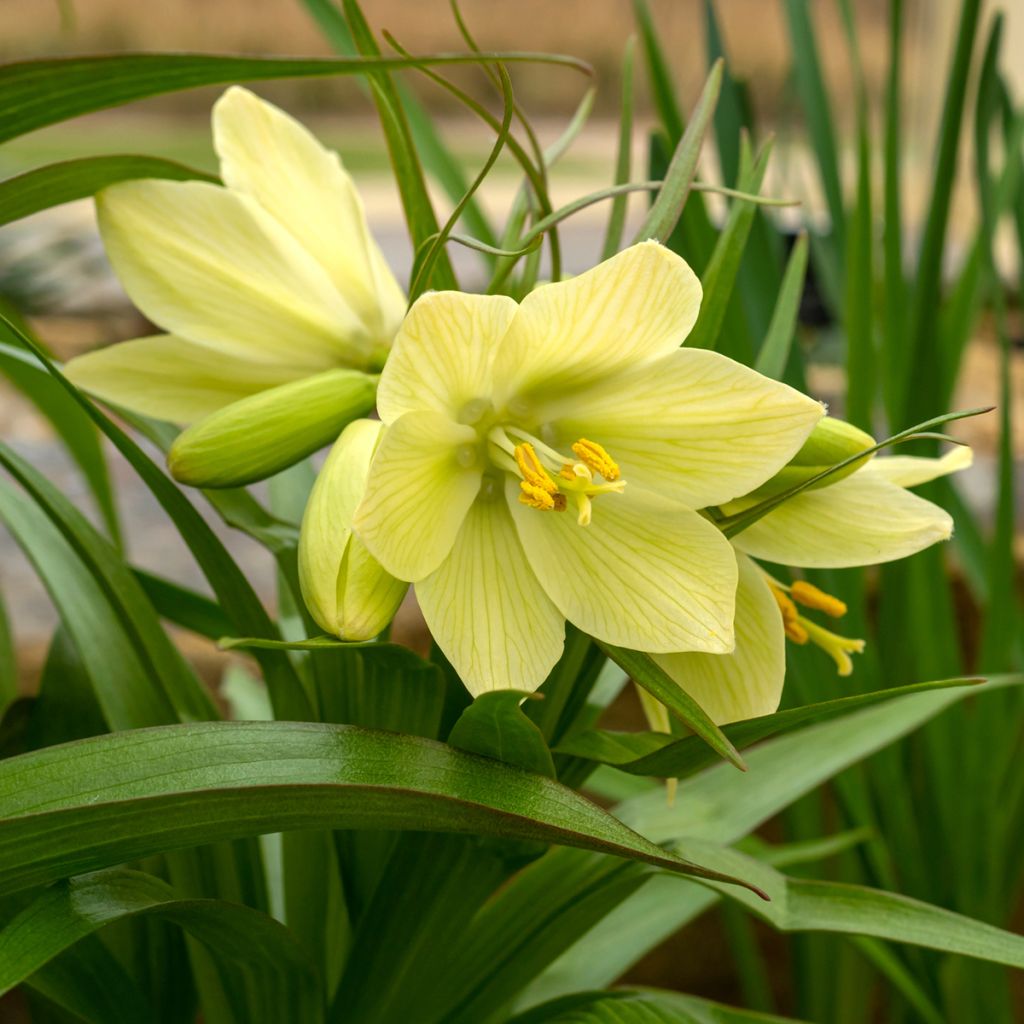

Fritillaria raddeana - Couronne impériale
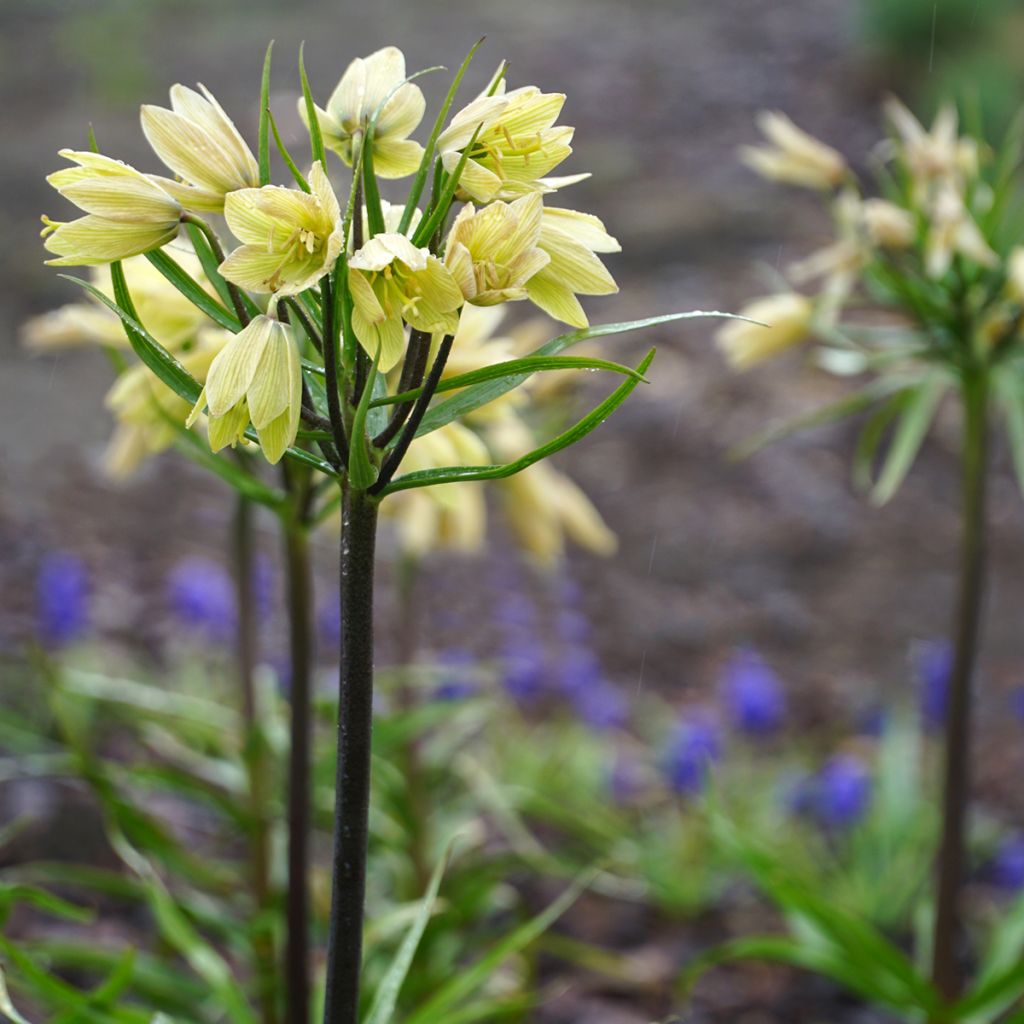

Fritillaria raddeana - Couronne impériale
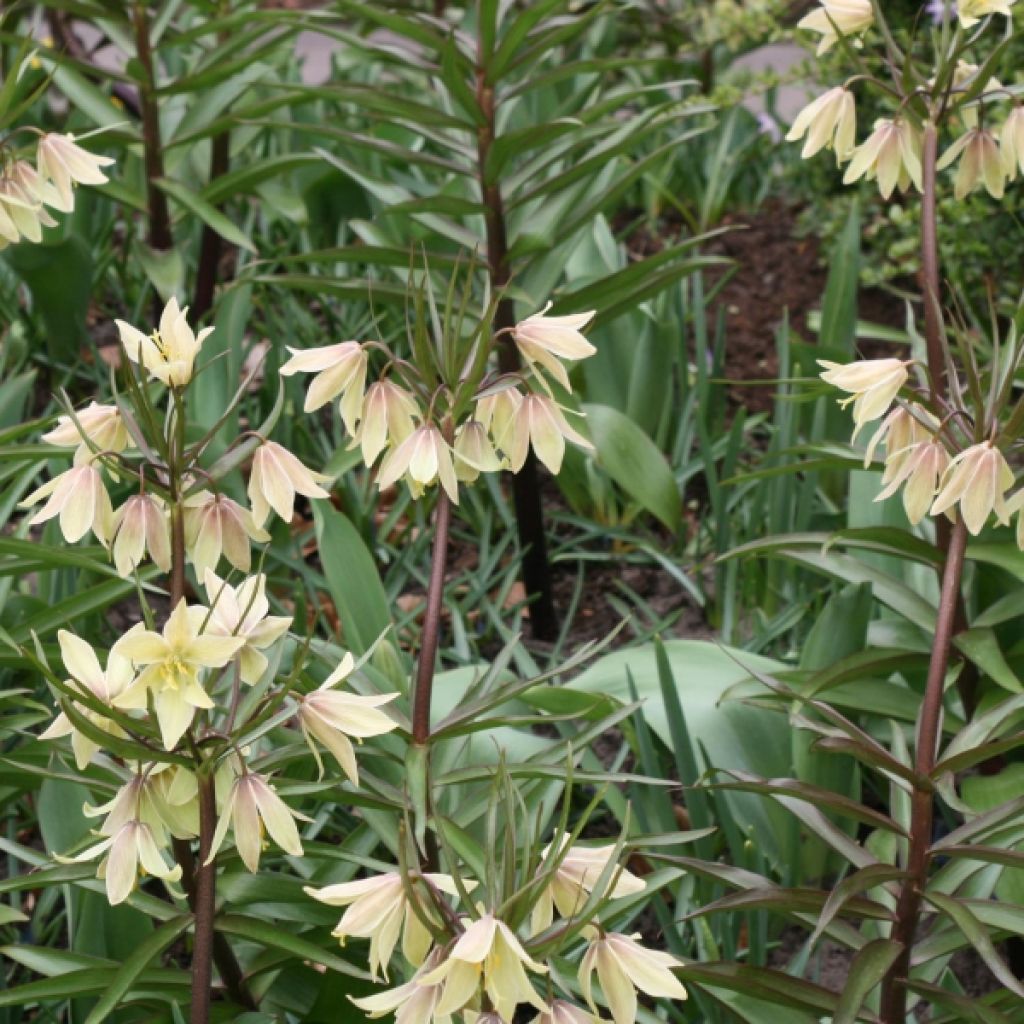

Fritillaire imperialis Raddeana - Couronne impériale
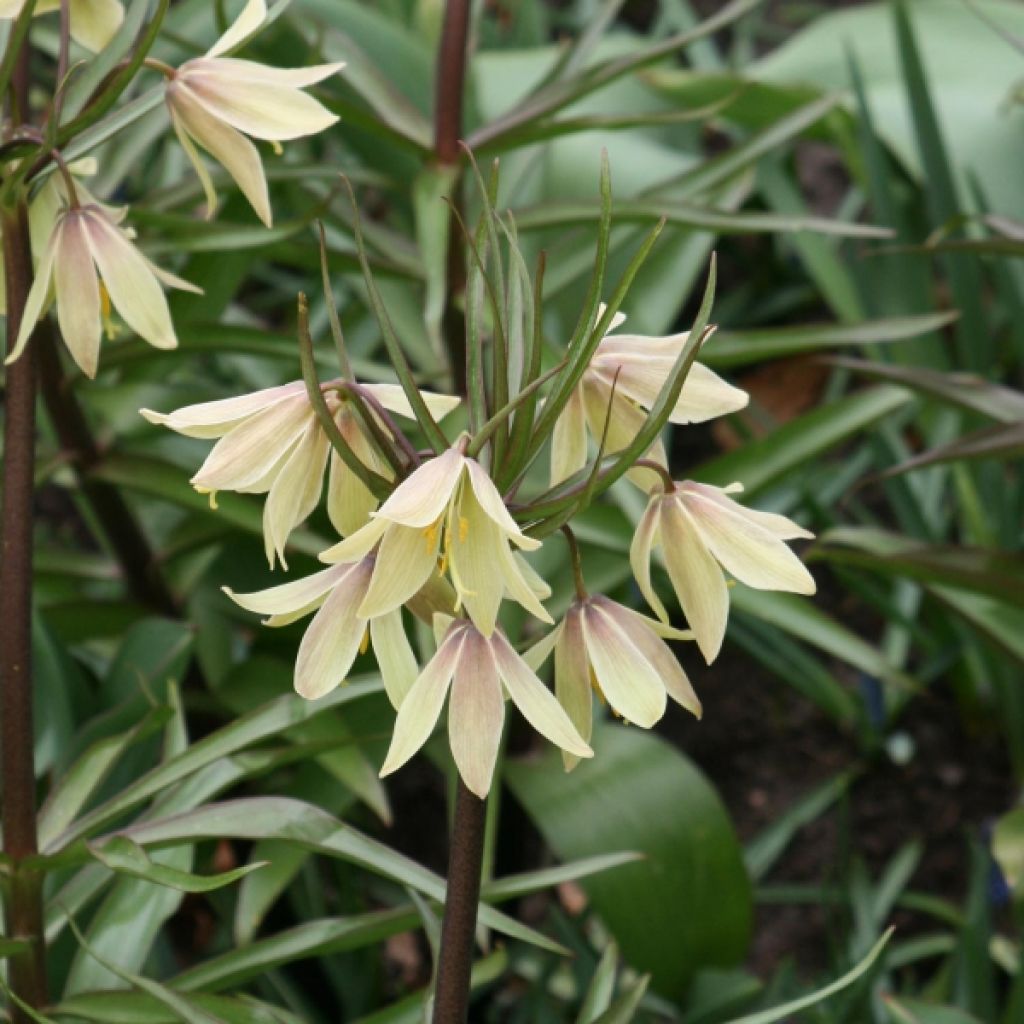

Fritillaire imperialis Raddeana - Couronne impériale
Fritillaria raddeana
Fritillaria raddeana
Raddes fritillary
Plant blooms every year (2 years)
Sophie, 18/03/2024
Special offer!
Receive a €20 voucher for any order over €90 (excluding delivery costs, credit notes, and plastic-free options)!
1- Add your favorite plants to your cart.
2- Once you have reached €90, confirm your order (you can even choose the delivery date!).
3- As soon as your order is shipped, you will receive an email containing your voucher code, valid for 3 months (90 days).
Your voucher is unique and can only be used once, for any order with a minimum value of €20, excluding delivery costs.
Can be combined with other current offers, non-divisible and non-refundable.
Why not try an alternative variety in stock?
View all →This plant carries a 6 months recovery warranty
More information
We guarantee the quality of our plants for a full growing cycle, and will replace at our expense any plant that fails to recover under normal climatic and planting conditions.

Does this plant fit my garden?
Set up your Plantfit profile →
Description
The Fritillaria raddeana is a magnificent bulbous plant very similar to classic imperial crowns, but a little shorter, a little earlier, and above all adorned with very pale yellow flowers, a much more subtle and easy to harmonize colour in the garden. Its large bulb is planted early in autumn, in well-drained soil, before its magnificent flowering stem adorned with a beautiful pastel bell-shaped crown emerges in spring. An exceptional plant, but relatively easy to acclimate to the sun in any well-drained, dry soil in winter and summer.
Distributed in Iran, Turkmenistan, and Kashmir, the Fritillaria raddeana belongs to the botany family Liliaceae, and to the subgenus Petilum. This rare botanical species is sometimes called dwarf imperial crown. In nature, it is found in well-exposed rocky areas, both in the plains and up to an altitude of 1800 m (5905ft), in regions with a montane and continental climate. It is a very hardy plant that loves cold winters but fears excessively wet soils in winter. The imperial fritillary, discovered at the same time as tulips, already adorned the gardens of Sultan Suleiman the Magnificent in 1530. Like the tulip, it was highly prized by collectors throughout the 17th century.
The vegetation of the Fritillaria raddeana emerges early in spring. It consists of a shiny stem covered with numerous narrow, long leaves measuring 8-12 cm (3-5in), also glossy, sheathing at the base, and a very fresh green. This stem rapidly elongates to reach a height of about 70-80 cm (28-32in) in April, at the time of flowering. The inflorescence forms at its tip. It consists of an umbel of 10 to 20 pendulous bell-shaped flowers, creamy yellow to greenish in colour, gathered in a crown. Each flower is composed of 6 tepals. This crown of flowers is topped with a tuft of very fresh green bracts, shaped like leaves, reminiscent of the tuft that surmounts pineapples. The vegetation dries up a few weeks after the end of flowering, marking the bulb's entry into a period of rest. Like all fritillaries, the strong odor emitted by its bulb makes it an excellent repellent in tulip beds, for example.
The Fritillaria raddeana is a botanical treasure. This bulbous plant deserves a prime location, in a well-chosen, sheltered spot that meets its requirements; a raised bed enriched with sand and gravel, a rock garden, or a garden with sandy and loamy soil should allow it to flourish. To accompany it, consider, for example, botanical or horticultural tulips, scillas, forget-me-nots, daffodils, and grape hyacinths with which it creates delightful compositions.
Fritillaria raddeana in pictures
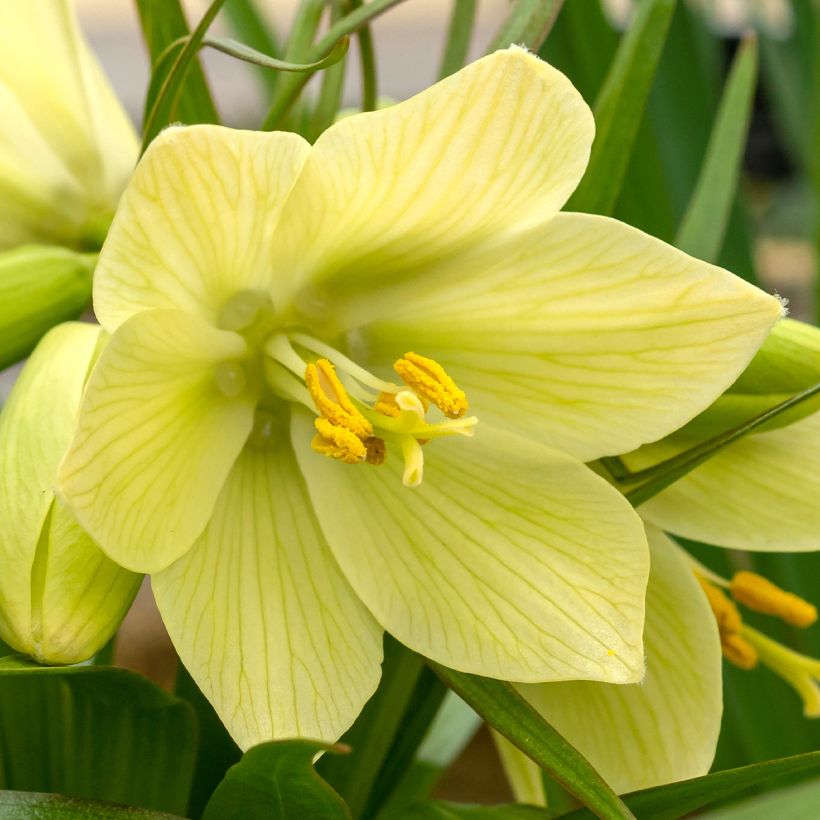

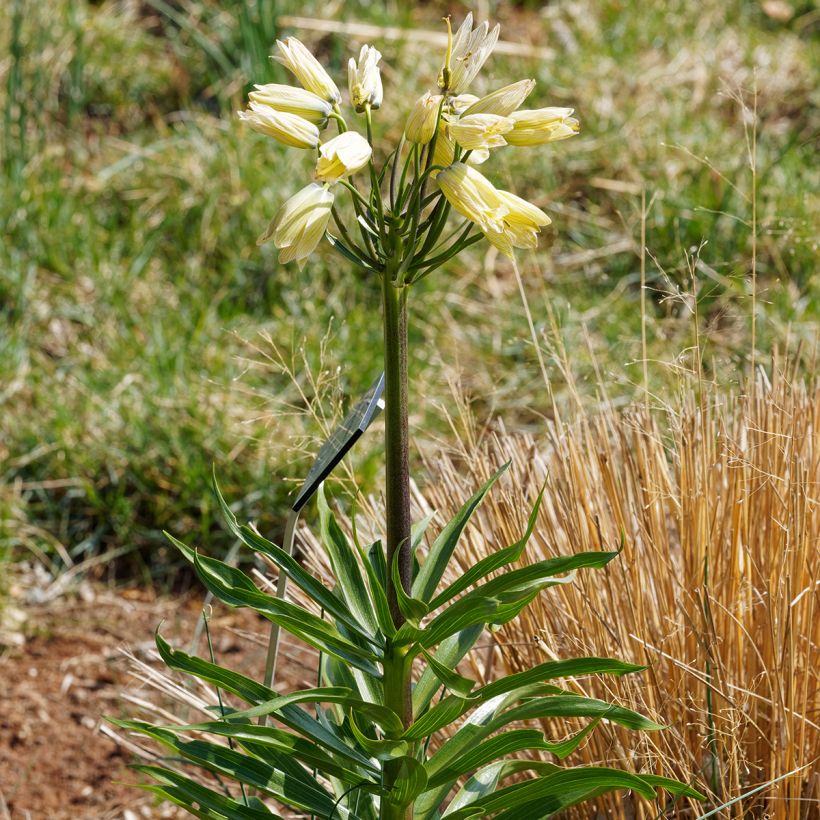

Plant habit
Flowering
Foliage
Botanical data
Fritillaria
raddeana
Liliaceae
Raddes fritillary
Cultivar or hybrid
Planting and care
The Fritillaire raddeana thrives in full sun. It needs light but not necessarily direct sunlight. It ideally thrives in a continental climate where winters and summers are dry and springs are humid. Plant it in a fertile and well-drained soil. Avoid heavy soil as it may lead to fungal growth. Also, if the drainage is insufficient, the fritillaire may rot. Plant it from September to October by adding sand, gravel or pumice to the hole. Place the bulb at a depth of 20 cm (8in). In winter, we recommend mulching the fritillaire to protect it from moisture. Remove faded flowers if you do not want them to self-seed. Do not water your fritillaires in summer and winter. If the soil is too dry in spring, water lightly to start the bulb, but without excess.
Planting period
Intended location
Care
Planting & care advice
-
, onOrder confirmed
Reply from on Promesse de fleurs
Haven't found what you were looking for?
Hardiness is the lowest winter temperature a plant can endure without suffering serious damage or even dying. However, hardiness is affected by location (a sheltered area, such as a patio), protection (winter cover) and soil type (hardiness is improved by well-drained soil).

Photo Sharing Terms & Conditions
In order to encourage gardeners to interact and share their experiences, Promesse de fleurs offers various media enabling content to be uploaded onto its Site - in particular via the ‘Photo sharing’ module.
The User agrees to refrain from:
- Posting any content that is illegal, prejudicial, insulting, racist, inciteful to hatred, revisionist, contrary to public decency, that infringes on privacy or on the privacy rights of third parties, in particular the publicity rights of persons and goods, intellectual property rights, or the right to privacy.
- Submitting content on behalf of a third party;
- Impersonate the identity of a third party and/or publish any personal information about a third party;
In general, the User undertakes to refrain from any unethical behaviour.
All Content (in particular text, comments, files, images, photos, videos, creative works, etc.), which may be subject to property or intellectual property rights, image or other private rights, shall remain the property of the User, subject to the limited rights granted by the terms of the licence granted by Promesse de fleurs as stated below. Users are at liberty to publish or not to publish such Content on the Site, notably via the ‘Photo Sharing’ facility, and accept that this Content shall be made public and freely accessible, notably on the Internet.
Users further acknowledge, undertake to have ,and guarantee that they hold all necessary rights and permissions to publish such material on the Site, in particular with regard to the legislation in force pertaining to any privacy, property, intellectual property, image, or contractual rights, or rights of any other nature. By publishing such Content on the Site, Users acknowledge accepting full liability as publishers of the Content within the meaning of the law, and grant Promesse de fleurs, free of charge, an inclusive, worldwide licence for the said Content for the entire duration of its publication, including all reproduction, representation, up/downloading, displaying, performing, transmission, and storage rights.
Users also grant permission for their name to be linked to the Content and accept that this link may not always be made available.
By engaging in posting material, Users consent to their Content becoming automatically accessible on the Internet, in particular on other sites and/or blogs and/or web pages of the Promesse de fleurs site, including in particular social pages and the Promesse de fleurs catalogue.
Users may secure the removal of entrusted content free of charge by issuing a simple request via our contact form.
The flowering period indicated on our website applies to countries and regions located in USDA zone 8 (France, the United Kingdom, Ireland, the Netherlands, etc.)
It will vary according to where you live:
- In zones 9 to 10 (Italy, Spain, Greece, etc.), flowering will occur about 2 to 4 weeks earlier.
- In zones 6 to 7 (Germany, Poland, Slovenia, and lower mountainous regions), flowering will be delayed by 2 to 3 weeks.
- In zone 5 (Central Europe, Scandinavia), blooming will be delayed by 3 to 5 weeks.
In temperate climates, pruning of spring-flowering shrubs (forsythia, spireas, etc.) should be done just after flowering.
Pruning of summer-flowering shrubs (Indian Lilac, Perovskia, etc.) can be done in winter or spring.
In cold regions as well as with frost-sensitive plants, avoid pruning too early when severe frosts may still occur.
The planting period indicated on our website applies to countries and regions located in USDA zone 8 (France, United Kingdom, Ireland, Netherlands).
It will vary according to where you live:
- In Mediterranean zones (Marseille, Madrid, Milan, etc.), autumn and winter are the best planting periods.
- In continental zones (Strasbourg, Munich, Vienna, etc.), delay planting by 2 to 3 weeks in spring and bring it forward by 2 to 4 weeks in autumn.
- In mountainous regions (the Alps, Pyrenees, Carpathians, etc.), it is best to plant in late spring (May-June) or late summer (August-September).
The harvesting period indicated on our website applies to countries and regions in USDA zone 8 (France, England, Ireland, the Netherlands).
In colder areas (Scandinavia, Poland, Austria...) fruit and vegetable harvests are likely to be delayed by 3-4 weeks.
In warmer areas (Italy, Spain, Greece, etc.), harvesting will probably take place earlier, depending on weather conditions.
The sowing periods indicated on our website apply to countries and regions within USDA Zone 8 (France, UK, Ireland, Netherlands).
In colder areas (Scandinavia, Poland, Austria...), delay any outdoor sowing by 3-4 weeks, or sow under glass.
In warmer climes (Italy, Spain, Greece, etc.), bring outdoor sowing forward by a few weeks.






























